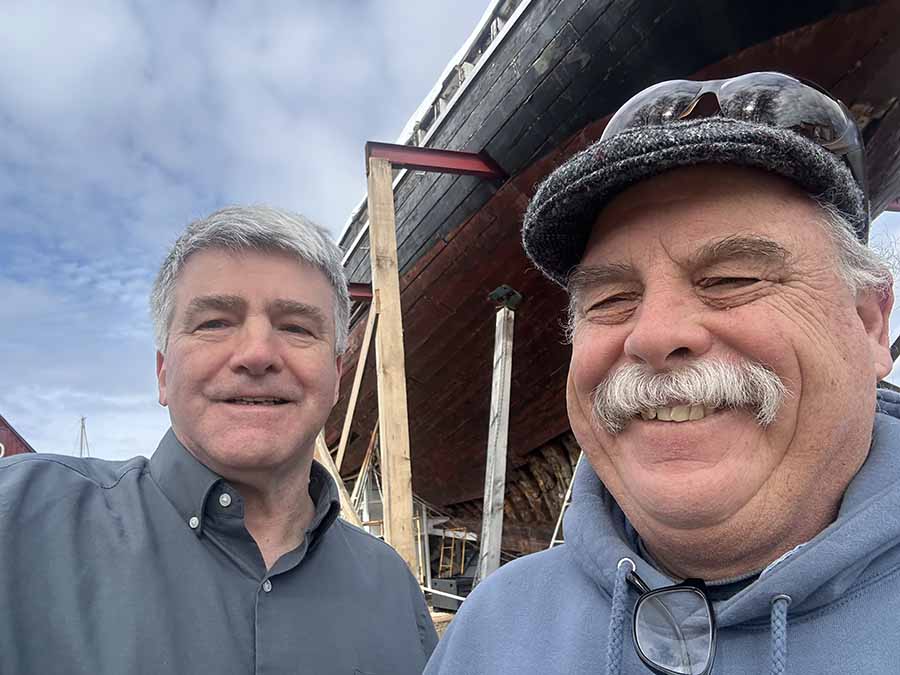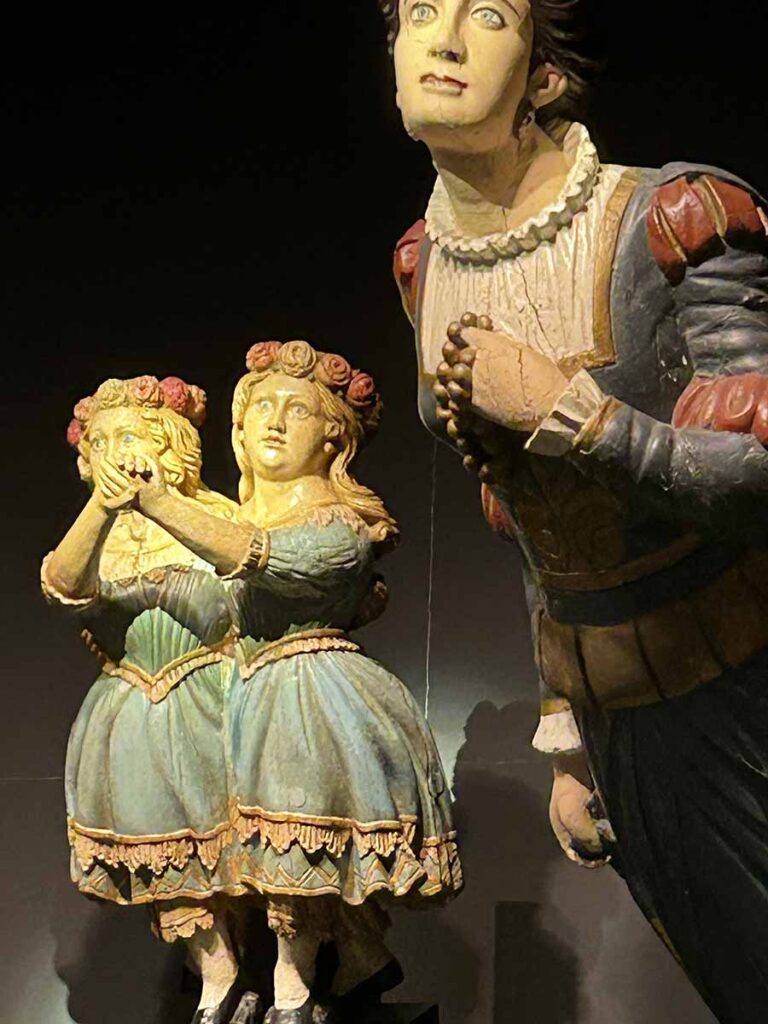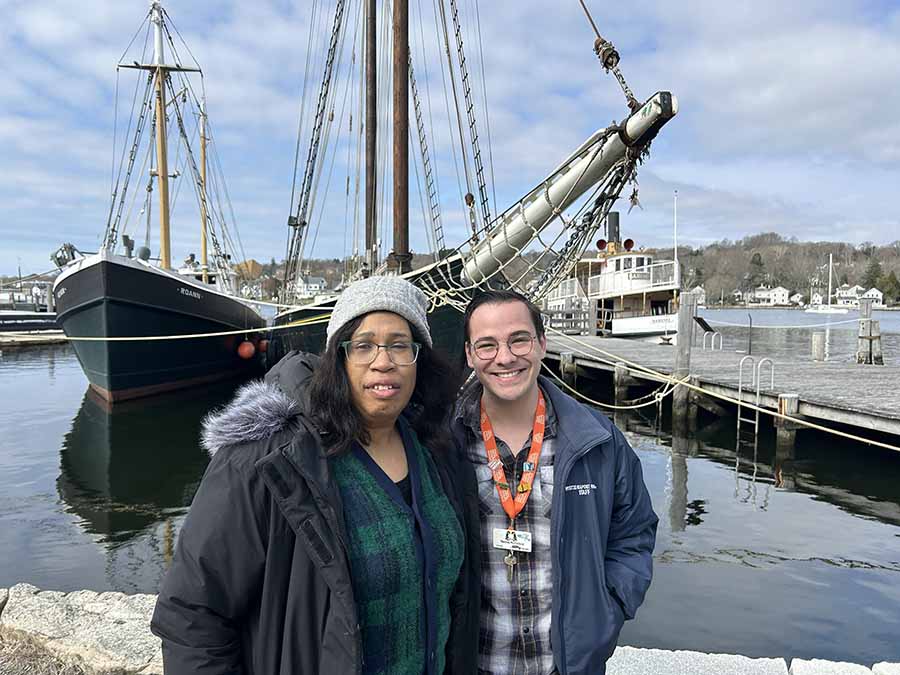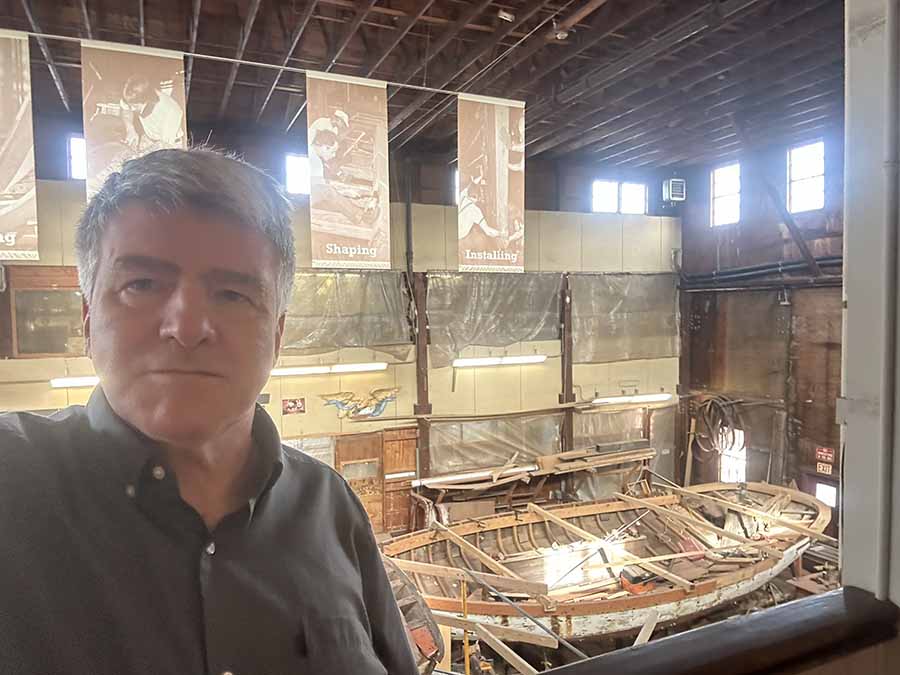
The sound wil betray it if the urge signs do not, something important is going on here. Showcase boats are mounted on the outside road, but the action is behind, part museum, part boatyard, a sort of place where you expect everyone you pass to go arrrr.
Thomas Mulholland, a descendant of the Mayflower and county Mayo on his distaff and sire sides, introduced us to the museum. “It was started by three gentlemen from the area who, around the turn of the century, began realising that the maritime area that they had grown up in a boat building town with a real maritime industry were changing. Technology was changing and updating so rapidly, from wood and sail boats, to steam power. Now we have 500 boats, many visiting boatsand buildings that came to us from different parts of Rhode Island.”
A visit to the Mystic Seaport Museum in Mystic, Connecticut—just across the Rhode Island border, about 20 minutes from Westerly—offers an immersive journey into America’s maritime past.
Located at 75 Greenmanville Avenue along the Mystic River, this 19-acre living history museum is the largest maritime museum in the United States, renowned for its meticulously preserved 19th-century seafaring village, historic ships, and hands-on exhibits. Here’s what visitors can expect:
The museum recreates a bustling 19th-century coastal village, with over 60 historic buildings—many relocated from New England—arranged along cobblestone streets and waterfront docks. The Mystic River provides a serene backdrop, with tall ships moored against wooden piers, their masts piercing the sky. The air carries a hint of salt and tar, evoking the era of sail and steam. It’s a blend of education and nostalgia, lively with costumed interpreters and the clang of a blacksmith’s hammer.
Walter Ansel. Lead Shipwright at Mystic seaport museum is just back from a ship-restorers conference in Amsterdam (“that Holland is just half underwater. so they they know their boats and shipsr“). He talks easily and enthusiastically about Mystic’s Irish heritage, as well as the passion that brings him here every day: “It’s an incredible place. I’ve been around here since I was 14 years old. I started by sweeping the shop out and I have seen a lot of changes over the years, but it still thrills me to see the big timber work, to see the problem-solving that goes on. I absolutely love the tools, and I love the ships, and I love the trade. There’s always something to learn. At my stage of life, I’m teaching the younger guys the trade the way I learned it as a kid, a second-generation shipwright. There’s a lot of institutional knowledge. You have to be there on the ground learning from the older fellows. It’s not always articulated. You’re watching what they’re doing and learning – learning by doing but also learning by watching.“
Tom is moving the tour along: “So, this bustle right over here, this white vessel with two decks. That is the steamboat Sabino. and it is the oldest commercially operating, you know, still commercially operating vessel in the United States. It’s a national historic landmark vessel, with an ironsides.”
Beyond the village, stroll the waterfront, picnic on grassy lawns, or climb the hill for river vistas. The 1920s schooner Australia sits in dry dock at the Preservation Shipyard, where restorers work year-round—chat with them about their craft.
Expect a full seven seas sensory plunge into maritime history—wood creaking underfoot on the Charles W. Morgan, the tang of salt in the air, and the rhythmic thud of a cooper’s mallet. It’s less static museum, more living story, with interpreters breathing life into the past—think a whaler recounting a stormy chase or a printer explaining a broadside. The ships’ scale awes, from the Morgan’s towering masts to the Sabino’s steam whistle. Children love the hands-on bits, while adults savor the depth of exhibits like the whaling logbooks or figurehead lore. Pair it with a stroll through downtown Mystic (pizza, ice cream, drawbridge) for a full day.
Tom is still talking: “something really interesting to note as before we walk away, you see anything hanging from the top of this buffer, from the front of it? Those are sharks tails. and this is a weirdo maritime superstitious sailors type tradition, where they believe that if you hang a shark’s tail off the bow your ship, it will bring you fair weather.” It was NOT working. We were wet.
Mystic Seaport museum delivers a vivid, all-ages adventure—part history lesson, part seaside escape—that captures New England’s seafaring soul. Whether you’re a sailor or a landlubber, it’s a tide that lifts all spirits.

The museum’s fleet is a highlight, with several vessels open for boarding:
- Charles W. Morgan (1841): The world’s last wooden whaling ship, restored and seaworthy, lets you climb aboard to explore its deck, cabins, and blubber room—a visceral link to whaling’s gritty past.
- L.A. Dunton (1921): A fishing schooner with a restored interior, showcasing life on the Grand Banks.
- Sabino (1908): A coal-fired steamboat offering 30-minute river cruises (May-October, $15 extra) with a soothing chug and river views.
- Joseph Conrad (1882): A training ship with towering masts, perfect for imagining life at sea.
- Seafaring Village: Wander through authentic 19th-century buildings staffed by interpreters in period garb:
- Shipsmith and Cooperage: Watch blacksmiths forge tools or coopers craft barrels, explaining maritime trades.
- Print Shop and Shipcarver: See hand-set printing or wooden figureheads take shape—skills that supported seafaring life.
- Chandlery and Apothecary: Browse goods sailors once relied on, from ropes to remedies.
- Mystic Bank and Church: Peek into the community’s economic and spiritual hubs.
- Thompson Exhibition Building: Rotating displays like “The Vikings Begin” or maritime art, with high-tech visuals and artifacts.
- Wendell Building: A vast collection of figureheads—eagles, mermaids, goddesses—carved from ship prows.
- Voyages Gallery: Explores global sea travel’s impact, from trade to migration, with interactive maps.
The museum is open daily from 10 AM to 4 PM (extended to 5 PM in summer), visitors can roam at their own pace with a map or the museum’s app. Admission ($31 adults, $29 seniors, $21-$27 youth 4-17, free under 4) covers all exhibits, ships, and village access.



DNE 2025 in Rhode Island: the Fam trip
Links: Discover New England tourism forum – DNE media panel discussion –
Hartford, Connecticut – Madison, Connecticut – Mashantucket Pequot Museum – Mystic, Connecticut – New Bedford, Massachusetts – New Haven Connecticut – Newport, Rhode Island – South Eastern Massachusetts – Westerly, Rhode Island
Boston city – Afternoon tea in Boston library – Boston Museum of Fine Art – China Pearl, in Boston’s Chinatown – Isabella Stewart Gardner Museum – View Boston panoramic tower




